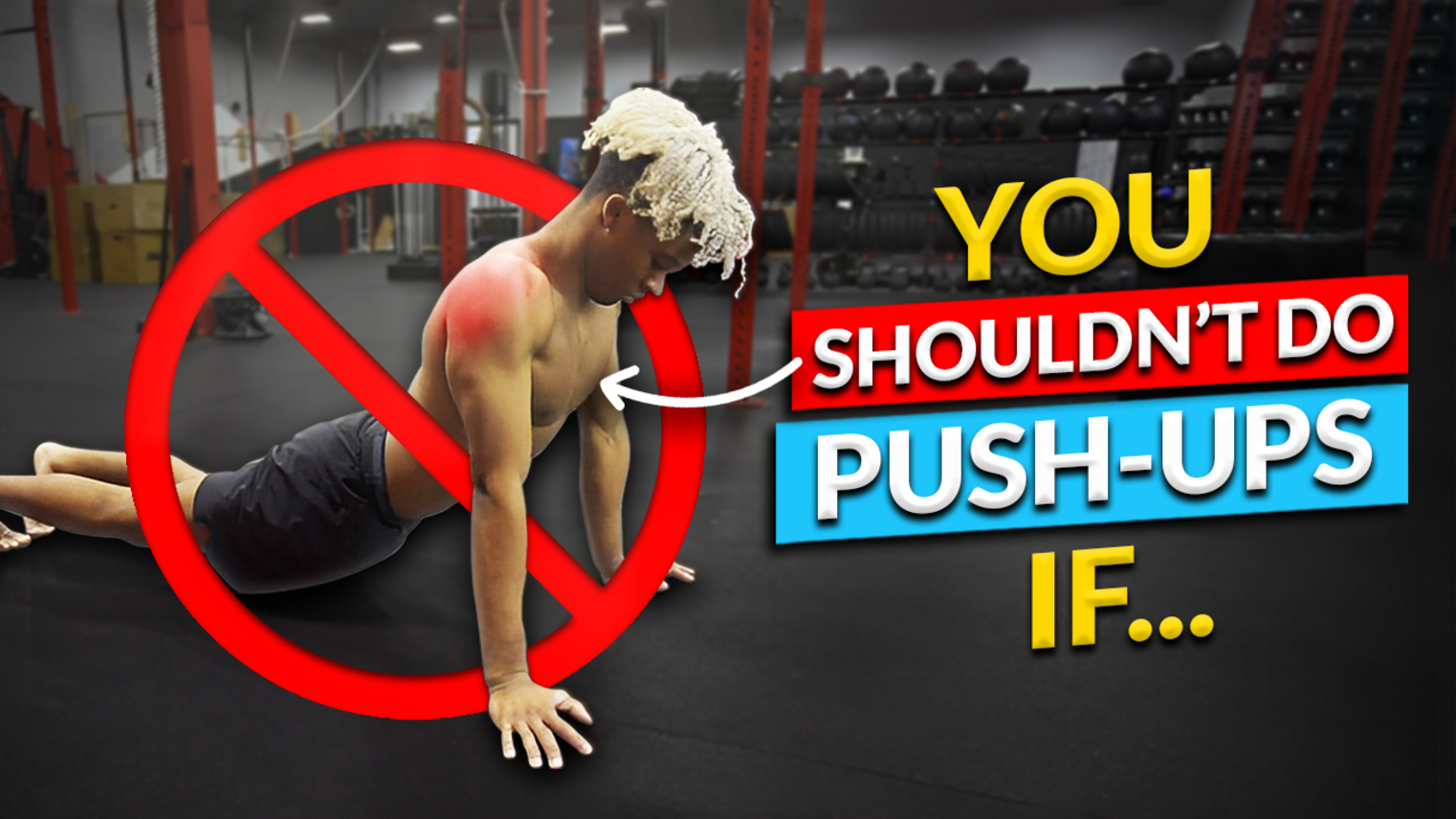Is your body trying to tell you something about push-ups? Then you might think, Is push-up good for me?
If you’ve ever questioned the suitability of this iconic exercise in your fitness regimen, you’re not alone.
💪Push-ups have long been seen as a sign of strength and toughness. But there is a surprising truth behind their popular image: they might not be the best way for everyone to get fit.
In this eye-opening article, 👀 we will show you some shocking reasons why push-ups might not be as helpful as most people think, especially for people who are prone to upper body injuries.
Brace yourself for a revealing exploration of these unexpected drawbacks. Let’s dive in!👊
✨What Are Push-Ups?
📍Push-ups are a fundamental bodyweight exercise that targets multiple muscle groups, primarily the chest, shoulders, triceps, and core. This involves lowering your body to the ground and then pushing it back up while keeping your body in a straight line.
Push-ups are known for being versatile because you do not need any equipment and you can do them at different fitness levels. They have been a mainstay of fitness routines for decades because they help build strength and endurance in the upper body.
🔥Who Should Not Be Doing Push-Ups?
✊Push-ups are a timeless exercise revered for their ability to sculpt and strengthen the upper body. However, it’s important to recognize that while they offer numerous benefits, they may not be suitable for everyone.
Conditions like torn labrums, torn rotator cuffs, pectoral injuries, and triceps injuries can make push-ups dangerous and require a careful reevaluation. 🥺
🤕Torn Labrum
A torn labrum is a common orthopedic injury that affects the shoulder joint. The labrum is a ring of cartilage that surrounds the shoulder socket, providing stability and cushioning to the joint.
When the labrum is torn, it can result in pain, instability, and a reduced range of motion in the shoulder. This condition can occur due to various factors, including trauma, overuse, or underlying shoulder conditions.
Performing push-ups with a torn labrum can exacerbate the injury and lead to further discomfort and complications. Here are several reasons why you should avoid doing push-ups if you have a torn labrum:
- 😢 Shoulder strain
- 😢 Pain and discomfort
- 😢 Reduced range of motion
- 😢 Impaired healing
- 😢 Risk of further injury.
🤕Torn Rotator Cuff
A torn rotator cuff is a common shoulder injury that affects the group of muscles and tendons surrounding the shoulder joint. These muscles and tendons play a crucial role in stabilizing and moving the shoulder.
A tear in the rotator cuff can occur gradually due to overuse or suddenly as a result of trauma. This injury is often characterized by pain, weakness, and a limited range of motion in the affected shoulder.
A doctor or physical therapist can advise you on exercises and a rehabilitation program if you suspect or have a torn rotator cuff.
Push-ups should generally be avoided until the torn rotator cuff has healed and your shoulder strength and range of motion have significantly improved. To maintain strength and conditioning during recovery, incorporate shoulder-friendly exercises into your fitness routine.
🤕Pectoral Injury
Pectoral injuries, which involve the muscles of the chest (pectoralis major and minor), can range from minor strains to severe tears. These injuries typically occur due to overuse, sudden trauma, or improper lifting techniques.
Symptoms of pectoral injuries include pain, swelling, weakness, and limited mobility in the chest and shoulder areas.
While healing and regaining chest and shoulder strength, avoid push-ups. Instead, focus on recovery-specific exercises that do not strain injured muscles.
🤕Triceps Injury
A triceps injury involves damage to the triceps brachii muscle, which is located at the back of the upper arm and is responsible for extending the elbow. Triceps injuries can range from strains to tears and often occur due to sudden trauma, overuse, or improper weightlifting techniques.
Common symptoms include pain, weakness, and a limited range of motion in the affected arm.
In most cases, push-ups should be avoided until the injury has fully healed and you have regained sufficient strength and range of motion in the triceps.
🧐Frequently Asked Questions:
🔎Are push-ups safe for everyone?
Push-ups can be safe for many people, but they may not be suitable for individuals with certain medical conditions, injuries, or physical limitations. Before starting a push-up routine, consult a doctor or fitness expert, especially if you have health concerns.
🔎Why might push-ups not be suitable for some individuals?
Push-ups place a significant amount of stress on the shoulders, wrists, and lower back. People with shoulder, wrist, or lower back issues may experience discomfort or exacerbate their condition when performing push-ups.
🔎Can push-ups lead to injuries?
No, but improper form when doing push-ups can lead to injuries, particularly in the shoulders, elbows, and wrists. It’s essential to maintain proper technique and gradually increase intensity to avoid injury.
🔎Are there age-related concerns with push-ups?
Yes, there are age-related concerns associated with push-ups. Older adults may encounter challenges due to reduced muscle strength and joint flexibility. But they can do push-ups by implementing progressive techniques and modifications that cater to individual capabilities and fitness levels.
👊 Alternatives to Push-Ups
There are some alternatives to push-ups if you have injuries that make this classic and effective exercise not suitable for you. But remember to consult with a healthcare professional or physical therapist before attempting any exercises.Here are some alternatives to push-ups:
- Plank: Engage your core by holding a plank position on your forearms and toes. This exercise strengthens your core and can be less strenuous on the upper body.
- 📍Leg Raises: Lie on your back and lift your legs off the ground, keeping them straight. This works your lower abdominal muscles without involving the upper body.
- Seated Dumbbell Rows: Sit on a bench with your back straight and use dumbbells to perform seated rows. This targets your back muscles without putting excessive strain on the injured area.
- Bodyweight Squats: Perform 📍squats by lowering your body as if you were sitting in a chair. This exercise strengthens your lower body and core without engaging the upper body.
- Resistance Band Exercises: 📍Resistance bands can be used for various lower body exercises, such as leg extensions, leg curls, and glute bridges, to maintain strength while avoiding upper body strain.
- Single-Leg Balance Exercises: Practice single-leg balance exercises to improve stability and strengthen the lower body without stressing the upper body.
🔥Conclusion
The shocking reasons why push-ups might not be your fitness confidant can’t be ignored, especially if you have upper body injuries. This journey through torn labrums, torn rotator cuffs, pectoral injuries, and triceps injuries exposes a hidden reality.
But remember, this isn’t the end of your fitness journey. With alternatives at your side, you can conquer adversity, stride past limitations, and sculpt a healthier version of yourself that defies the odds. Embrace the wisdom of tailored workouts and emerge from this revelation stronger and more resilient than ever before.
The Movement Athlete offers a lifelong, progressive, and effective body weight training program that best aligns with your fitness goals. Take the assessment now and get a free, personalized training plan.




0 Comments